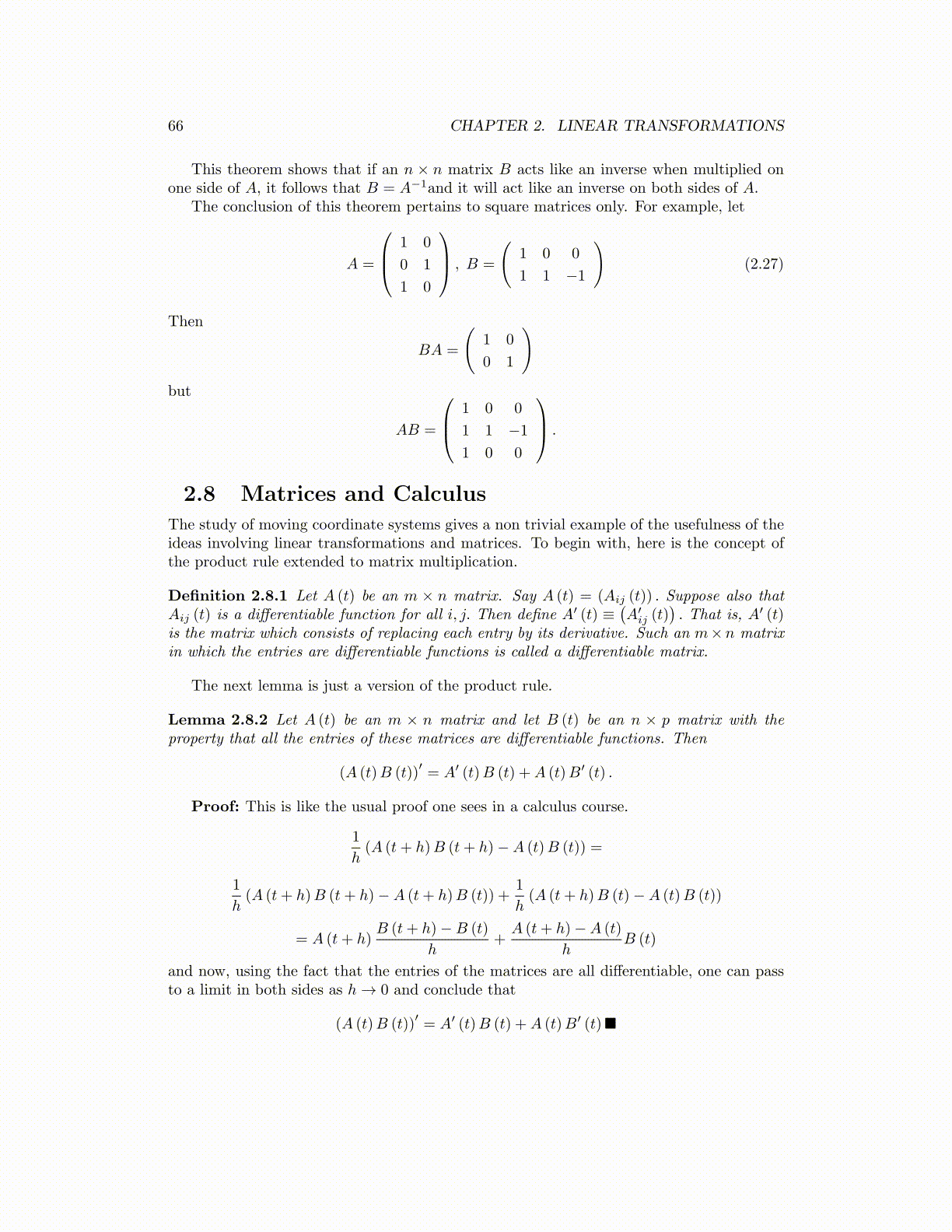
66 CHAPTER 2. LINEAR TRANSFORMATIONS
This theorem shows that if an n × n matrix B acts like an inverse when multiplied onone side of A, it follows that B = A−1and it will act like an inverse on both sides of A.
The conclusion of this theorem pertains to square matrices only. For example, let
A =
1 0
0 1
1 0
, B =
(1 0 0
1 1 −1
)(2.27)
Then
BA =
(1 0
0 1
)but
AB =
1 0 0
1 1 −1
1 0 0
.
2.8 Matrices and Calculus
The study of moving coordinate systems gives a non trivial example of the usefulness of theideas involving linear transformations and matrices. To begin with, here is the concept ofthe product rule extended to matrix multiplication.
Definition 2.8.1 Let A (t) be an m × n matrix. Say A (t) = (Aij (t)) . Suppose also thatAij (t) is a differentiable function for all i, j. Then define A′ (t) ≡
(A′
ij (t)). That is, A′ (t)
is the matrix which consists of replacing each entry by its derivative. Such an m×n matrixin which the entries are differentiable functions is called a differentiable matrix.
The next lemma is just a version of the product rule.
Lemma 2.8.2 Let A (t) be an m × n matrix and let B (t) be an n × p matrix with theproperty that all the entries of these matrices are differentiable functions. Then
(A (t)B (t))′= A′ (t)B (t) +A (t)B′ (t) .
Proof: This is like the usual proof one sees in a calculus course.
1
h(A (t+ h)B (t+ h)−A (t)B (t)) =
1
h(A (t+ h)B (t+ h)−A (t+ h)B (t)) +
1
h(A (t+ h)B (t)−A (t)B (t))
= A (t+ h)B (t+ h)−B (t)
h+A (t+ h)−A (t)
hB (t)
and now, using the fact that the entries of the matrices are all differentiable, one can passto a limit in both sides as h→ 0 and conclude that
(A (t)B (t))′= A′ (t)B (t) +A (t)B′ (t)■